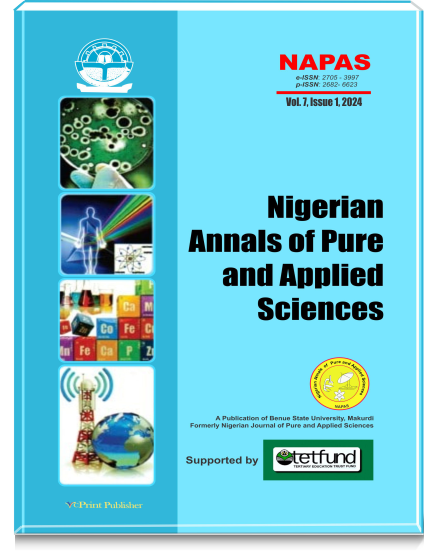Effect of Orange Rind Powder Incorporation on The Physical, Nutritional and Sensorial Qualities of Cookie
Authors
-
Agbo E.O.
Department of Chemistry, Faculty of Science, Benue State University, Makurdi-Nigeria.
-
Oyawale T. A.
Centre for Food Technology and Research, Benue State University, Makurdi-Nigeria.
-
Adoga S.O.
Department of Chemistry, Faculty of Science, Benue State University, Makurdi-Nigeria.
-
Iningev S.T.
Department of Chemistry, Faculty of Science, Benue State University, Makurdi-Nigeria.
-
Okopi S.O.
Department of Chemistry, Faculty of Science, Benue State University, Makurdi-Nigeria.
-
Buluku G.T.
Department of Chemistry, Faculty of Science, Benue State University, Makurdi-Nigeria.
Abstract
Currently, the awareness of the role of functional ingredients in diets is on thern increase, which prompts the demand for functional foods. This study aimed atrn incorporating varying percentages of the orange rind powder with wheatrn powder to get the most suitable combination for nutritionally improved cookies.rn Sweet orange samples were collected, washed thoroughly and peeled. Thern peels were cut into smaller pieces and oven dried (35 oC) to a constant weight.rn The dried peels were pulverized and sieved to obtain a fine powder. Thern cookies were prepared using wheat mixed with 5, 10, 15, and 20 % orange rindrn powder and conventional baking ingredients. The prepared cookies werern evaluated using standard methods for nutritional composition and sensoryrn properties using 9-point hedonic scale. Data obtained were statisticallyrn analyzed using ANOVA by SPSS software at 5 % level of significance. Thern results obtained showed that ORP incorporated cookies contained lowerrn amount of moisture, crude protein, fat and carbohydrate but higher fibre andrn ash compared to the cookies without ORP. The higher fibre and ash content ofrn ORP incorporated cookies signified that orange rinds contained more fibrern and ash. The fibre and ash content were in the range 4.48 – 14.86 % and 1.73– 4.13 % respectively, whereas that of the control (100 % WF) were 1.31 andrn 1.23 %, respectively. Orange rind powder can be incorporated with wheatrn flour in cookie production up to 10 % inclusion for the development of fibrern and mineral rich functional cookies without adverse effect on sensoryrn characteristics. Therefore, agro waste (orange rinds) can be utilized for valuern added products.


